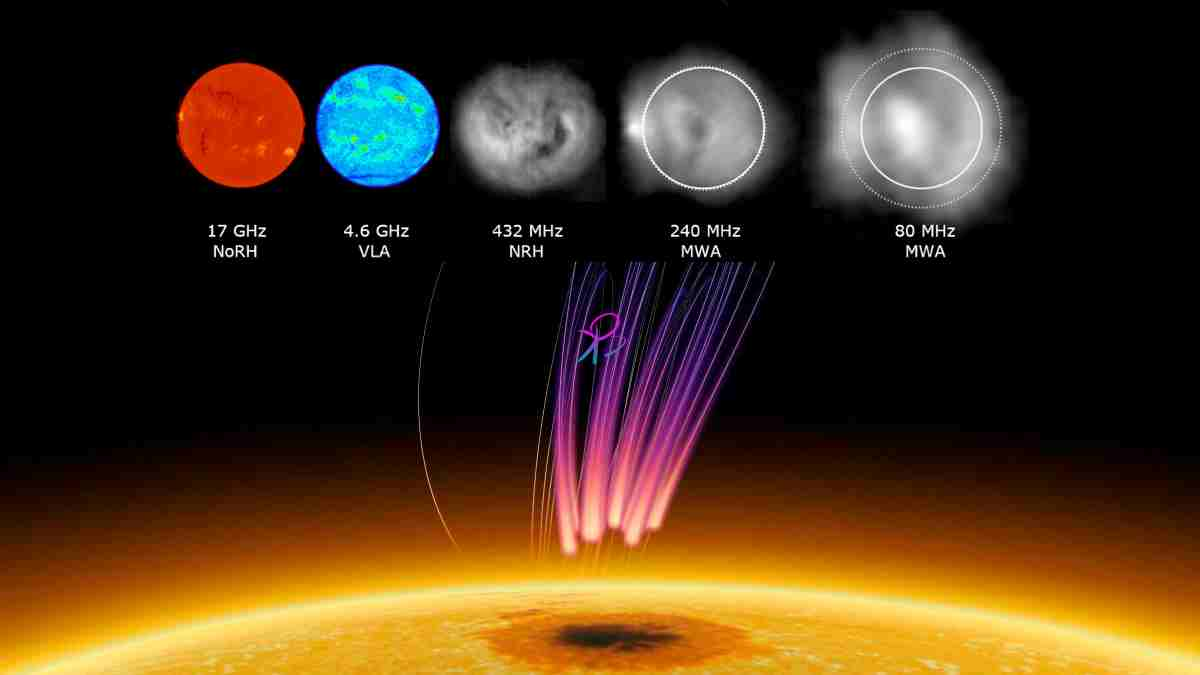Sun Through Radio Imaging - Radio imaging has become a vital tool in studying our Sun, offering a glimpse into the complex dynamics of solar activity through the lens of radio frequencies. Unlike visible light observations, radio images capture phenomena related to the Sun's magnetic fields and atmospheric changes that are invisible in other spectrums. This blog dives deep into the latest advancements and significant discoveries in solar radio imaging, enhancing our understanding of the Sun and improving space weather forecasting.
Table of Contents
The Role of Radio Telescopes in Solar Observations
Radio telescopes are specialized instruments designed to detect and image radio frequency emissions from astronomical objects, including the Sun. Facilities like the Atacama Large Millimeter/submillimeter Array (ALMA) and the Owens Valley Radio Observatory (OVRO) are at the forefront of these observations.
- Technology Update: Recent upgrades in radio telescope technology, such as enhanced receiver sensitivity and better data processing algorithms, have significantly improved the resolution and quality of solar images.
- Frequency Capabilities: Different frequencies capture various aspects of the Sun. For example, lower frequencies (below 1 GHz) often reveal the outermost layers of the solar atmosphere, while higher frequencies (above 10 GHz) provide details closer to the solar surface.
Key Solar Features Captured in Radio Images

Radio images of the Sun uncover several critical features that are pivotal for understanding solar behavior:
- Solar Flares: In early 2023, a series of intense solar flares were captured via radio imaging, showcasing detailed plasma ejections not visible in UV or visible spectra.
- Coronal Mass Ejections (CMEs): Radio images frequently track these massive bursts of solar material that, if Earth-directed, can lead to geomagnetic storms.
- Sunspots and Magnetic Fields: Radio imaging is crucial in studying the magnetic fields around sunspots, which are often precursors to solar flares and CMEs.
Recent Breakthroughs in Solar Radio Imaging
The past year has seen remarkable breakthroughs in solar radio imaging, largely driven by technological enhancements and greater international collaboration:
- Dynamic Spectral Imaging: ALMA's recent implementation of dynamic spectral imaging allows researchers to observe changes in solar emissions over time, providing insights into the evolving nature of solar activity.
- 3D Mapping: Advanced computational models now integrate radio images to create three-dimensional maps of the Sun's atmosphere, offering a more comprehensive understanding of its structure and dynamics.
Advantages of Radio Imaging Over Other Methods
Radio imaging provides unique advantages in solar observation, crucial for ongoing research and practical applications:
- Weather Resilience: Unlike optical telescopes, radio telescopes can operate under almost any weather condition, providing continuous monitoring.
- Comprehensive Coverage: Radio waves penetrate different layers of the solar atmosphere, giving a fuller picture of its complex dynamics.
The Impact on Space Weather Forecasting
Understanding solar activity is paramount for predicting space weather, which affects everything from satellite operations to power grids on Earth. Radio images are instrumental in providing early warnings for potentially disruptive solar events.
- Real-Time Monitoring: Continuous radio observation helps scientists provide real-time alerts on space weather conditions, crucial for mitigating potential impacts on Earth's technological infrastructure.

Looking Ahead: The Future of Solar Radio Imaging
The future of solar radio imaging is bright, with several exciting prospects:
- Next-Generation Telescopes: Projects like the Square Kilometer Array (SKA) promise even higher resolution and sensitivity, potentially
revolutionizing our understanding of solar physics.
- International Collaborations: Initiatives like the European Solar Telescope (EST) aim to pool global expertise and resources, enhancing the quality and scope of solar observations.
Further references
https://en.wikipedia.org/wiki/Solar_radio_emission
The sun radio space imaging experiment (SunRISE) | IEEE Conference Publication | IEEE Xplore
Radio polarimetric imaging of the solar corona at low frequencies (iiap.res.in)
Conclusion
Radio imaging continues to be an invaluable tool in our quest to understand the Sun. By revealing hidden aspects of solar activity, these observations help scientists and researchers not only to forecast space weather but also to probe the fundamental processes driving our star's behavior. With ongoing advancements in technology and international cooperation, we can expect even more detailed and insightful discoveries about the Sun. This relentless pursuit not only satisfies our curiosity but also safeguards our increasingly technology-dependent society against the unpredictable nature of solar phenomena.
Engaging with the latest in solar radio imaging not only deepens our knowledge but also prepares us for the challenges posed by space weather. By staying informed on these advancements, we keep ourselves ready and resilient, armed with the knowledge to protect and to advance our technological frontiers.

One reply on “Sun Through Radio Imaging – Advances and Discoveries”
[…] is crucial. Common options include Perfectly Matched Layer (PML) boundaries to absorb outgoing waves, ensuring they do not reflect back into the simulation domain. Choose the appropriate boundary […]